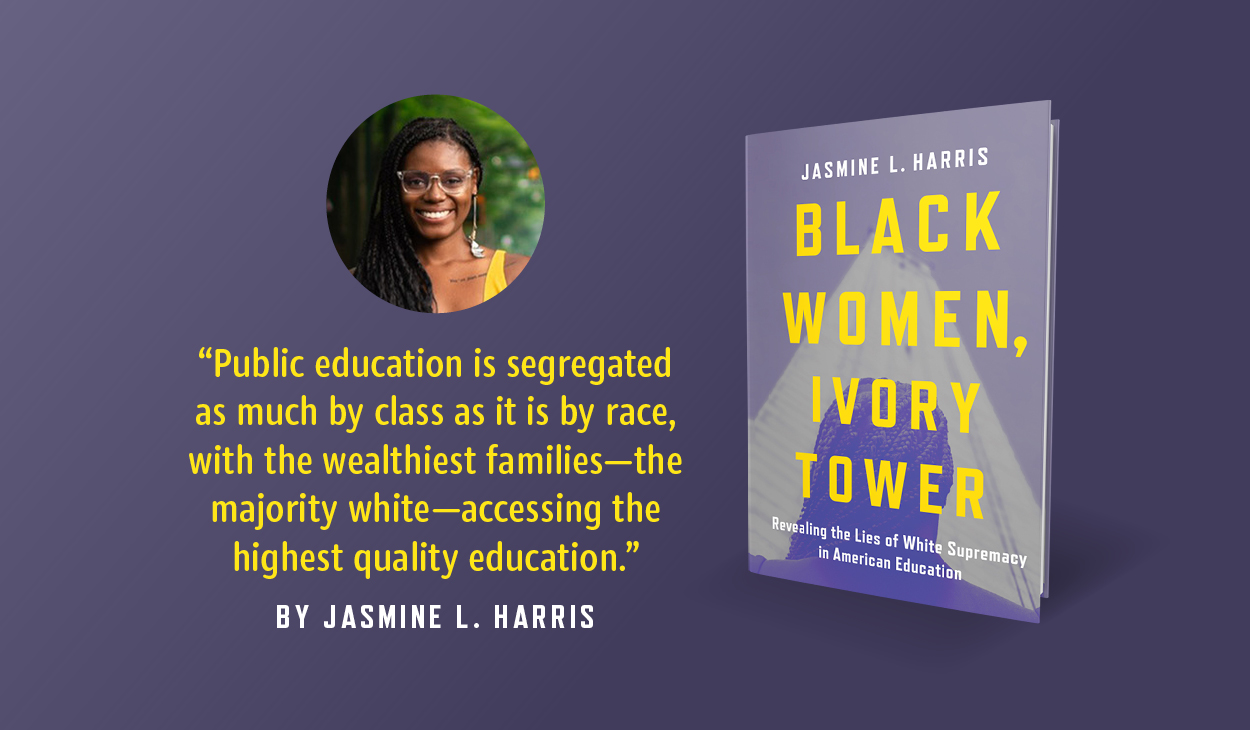Though my mother, sister, and I moved around a lot as my mother chased promotions to improve our class status, both children, my sister Jenaé and I, spent the majority of our K through 12 years in one district, Independent School District (ISD) 196. The fourth-largest school district in Minnesota, ISD 196 includes the suburbs south of the Mississippi River and is less than twenty miles from the twin cities of Minneapolis and Saint Paul. When I attended in the middle and late 1990s, ISD 196 was considered one of the best school districts in the country, and Apple Valley High School, one of the best 140 high schools in the United States. The district has been awarded six National Blue Ribbon awards for excellence, given to the highest performing schools based on state assessments in academics, athletics, and the arts. More importantly, thanks to Minnesota’s system of relying on local property taxes to fund school districts (which is not unlike many other states) and the high property values of the upper middle class homes in the area, ISD 196 has historically had a surplus of budgetary funds to allocate per student.
My mom understood the game. Find a public school in a well-funded district, and rent within district lines. Though my mom always coveted ownership (and she did eventually buy a house in the district in 2003), renting was a way in, when she’d otherwise be unable to afford to send us to schools of this caliber. Her strategy was well founded. Renting meant flexibility when we inevitably moved states so she could move up the corporate ladder, but it also made access to well-funded public schools a reality for her children. The sad fact about American public education is that continuing to rely on property taxes, and therefore home value, as a major component of public education funding means most Black people won’t have access to the best public schools because not only are we less likely to own homes, but when we do those homes are likely worth less and in closer proximity to poor neighborhoods than white people. Stories of Black women using false addresses to enroll their kids in specific schools are more an example of a broken system than an indictment of the mothers in search of quality education for their children. The real crime is that so many Black mothers are forced to resort to these kinds of strategies in the first place when white mothers are not.
The perpetual imbalance of per-student funding district-to-district is not indicative of a flaw in the system. The system was built this way on purpose. The first iteration of what would become our modern public education institution proposed by Thomas Jefferson included a two-track system to separate students into “the laboring and learned,” where the majority find themselves in the former and a select few “geniuses” would be afforded upward social mobility as they “learned” via more formal education. A few years later, situating education around residential land occupation and therefore positioning non-white settlers as unworthy of education, the “sur-vey” of the Northwest Territory (what would later become a handful of midwestern states, including Dakota County, Minnesota, named for the tribe of Native Americans displaced by white occupation) established townships across the land and reserved space for local schools in each area via land grants. This occupation of land already in use by Native Americans was also the impetus for establishing white supremacy as a part of the fabric of American development and inherent to a lack of belonging among non-white students for the next three centuries.
Dividing American land into towns was foundational to shaping the United States into classed communities. These “towns” maintain inequality in public education that specifically disadvantages poor Black and brown students while providing state-funded advantages to rich white students. By 1830, Massachusetts passed laws to provide free public education to all children, including the first public high school, and fourteen years later the state would legalize segregated schools ahead of Black emancipation, though more than 5 percent of enslaved people would still learn to read at the risk of severe physical punishment or death.
During the industrial revolution, public schools were meant to create docile, obedient factory workers out of the white and increasingly immigrant populations swelling American cities. The necessity to “civilize” immigrants led to the passing of compulsory education laws designed to make them better workers and simultaneously force the learning and use of English as the primary language in public settings. These requirements formalize non-white students as the other, whose belonging is proven via successful assimilation into public spaces designed around the needs of white men. It forces non-white students to mirror their white peers rather than advocate for their unique interests.
In 1837, Horace Mann became the first head of the Massachusetts State Board of Education, a state enterprise under which Mann championed public education for all. Ironically, Horace Mann’s namesake, the Horace Mann School in New York City, is the second most expensive private school in the area and caters to the richest and wealthiest predominantly white students. The tuition for 2018–2019 was $51,000 per K through 12 academic year. In 2010, Horace Mann School was named the second-best prep school in the country by Forbes magazine, hardly the free common public education first imagined by Mann, and evidence of the class-based nature of American education.
Today public education is segregated as much by class as it is by race, with the wealthiest families—the majority white—accessing the highest quality education. In the years between Mann’s development of public education in Massachusetts and the introduction of public education’s modern template, an equation of funding was developed out of varying mixes of federal, state, and local sources. In 2022, federal funding equaled about 10 percent of a school district’s overall budget, regardless of the state. The rest of the money comes from a percentage of sales and income tax revenue from the state and often, most importantly, from local district communities.
A combination of state and local funding racializes public schooling because neighborhoods and, thus, neighborhood home values are in part decided by the racial makeup of the area. Redlining was the primary tool local governments used to create “white” and “Black” neighborhoods and install “good” and “bad” schools within their borders. Fifty years of constricted mortgage approvals in predominantly Black neighborhoods led to white flight from integrating neighborhoods as Black people took on predatory loans to access home ownership in which the values of their homes would never appreciate. Today, modern gentrification continues to displace Black folks in areas where home prices are low because of government subsidies on local property taxes. This doesn’t improve the funding scenarios in the same neighborhoods, leaving Black people living in predominantly Black communities gutted by poverty and therefore without access to quality public education compared to their white peers in well-funded neighborhoods. Even with incomes of more than $75,000, Black households are more likely located in higher poverty neighborhoods than white households earning less than $40,000. We are being purposefully herded into impoverished communities and blocked from the many institutions that may precipitate our escape.
I recognize that I benefited from a system of public education specifically meant not to benefit Black families or the children they need to educate. But the totality of public educational structure and the culture it perpetuates meant that while I can and do access higher quality education than a majority of Black people in this country, it’s not enough to make me belong there. And perceived belonging is important to several facets of academic achievement. Imagine understanding that the classrooms you occupy are not spaces built with your needs or education in mind, and simultaneously understanding the amount of “Black excellence” necessary to justify your presence to your white teachers, counselors, and administrators—justifications not expected of your white classmates, regardless of their class identity. Sometimes, parents (like mine) try to make the best decisions to ensure the most positive outcomes for their kids, so they overlook the traumas their children will be exposed to in the interest of better long-term life chances. I was successful, but not everyone is. What looks like upward social mobility for the Black middle class in the eyes of Black people without the same class access is actually static positioning, and includes perpetual feelings of unwelcomeness in the institutions and entrance into predominantly white classrooms we need simply to maintain our livelihoods. Once inside HWSCUs (Historically White-Serving Colleges and Universities), excessive academic achievements lead to only minimal potential upward social mobility, and downward mobility is just a few missed paychecks away.
This is an excerpt from Black Women, Ivory Tower chapter 7, “Class Matters.”


9781506489834c.jpeg?width=225&height=338&name=BL_BlackWomenIvoryTower_Cover)9781506489834c.jpeg)
